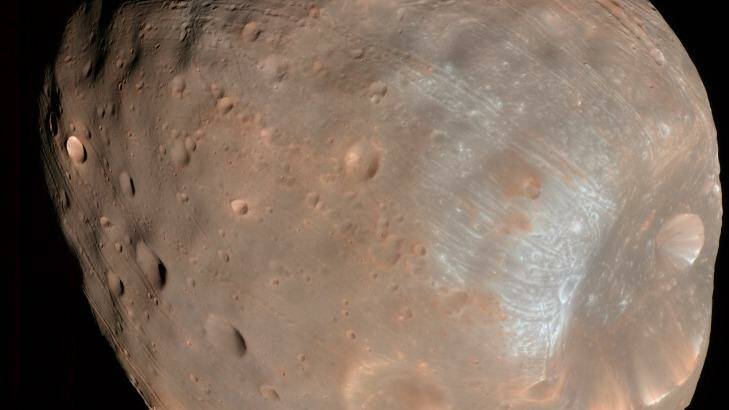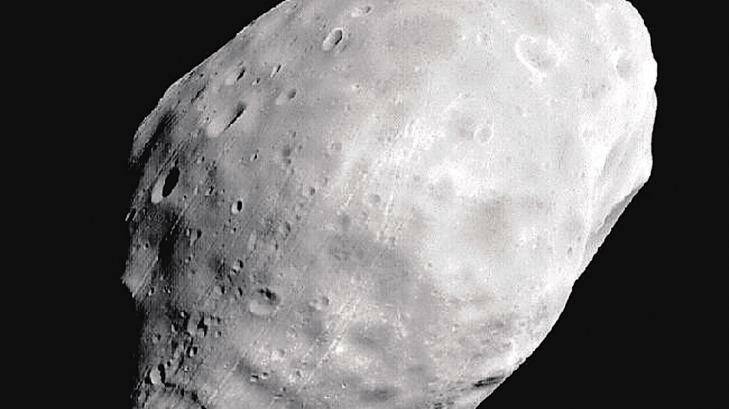

Potato-shaped Phobos, the bigger of Mars' two mini-moons, will break apart between 20 million and 40 million years from now, endowing the Red Planet with its own spectacular Saturn-like ring.
Subscribe now for unlimited access.
$0/
(min cost $0)
or signup to continue reading
A study by US scientists, published on Tuesday in the journal Nature Geoscience, predicts the ring will persist for millions of years, eventually becoming as distinct as some of Saturn's famous colourful bands.
"The Phobos ring of Mars will be less shiny than Saturn's rings because it will be made of rocky grains and pebbles rather than various-sized particles of water ice," said ICRAR-Curtin University astrophysicist Rob Soria.
"It would be a thin ring, probably less than 100 kilometres across – as opposed to the rings of Saturn, some of which are more than 100,000 kilometres wide," Dr Soria said. "The Mars ring will slowly spread out over the next hundred million years, until it essentially vanishes."
When it first forms, the ring of Mars should be observable from Earth by amateur astronomers when it gets illuminated by the sun – "especially with the technology they will have in millions of years from now", Dr Soria explained.
Based on their observations and a geological model of the moon, the US researchers, Benjamin Black and Tushar Mittal of the University of California Berkeley, said 20-kilometre-wide Phobos was gradually spiralling inwards towards Mars.
This results from the planet's gravitational pull being stronger on the nearest side of Phobos than its farthest side. "Our Moon suffers from similar tidal forces," said Swinburne physicist Kurt Liffman. "But it is outside Earth's synchronous orbit, so the Moon is slowly moving away from the Earth."
The latest analysis also showed that Phobos - which formed from rubble thrown up after a big asteroid hit Mars - was made of relatively weak materials. This led to the conclusion that the moon was likelier to break up than slam into its parent planet.
"Phobos will definitely break up," said Swinburne University astrophysicst Alan Duffy. "But, at this stage, it's unknown whether some pieces of the moon are strong enough to resist the gravitational forces and stay together as chunks that could smash into the parent planet."
As it orbits, Phobos travels at two kilometres a second. In the course of spiralling it inwards, the moon will eventually speed up to five kilometres a second.
"So, if the entire moon hit Mars, it would make a spectacular crater - similar in scale to the event that led to the demise of the dinosaurs, with a crater tens of kilometres across," Dr Duffy said.
The research also casts light on how other inwardly migrating moons in our solar system may have self-destructed long ago.
Please send bright ideas for new topics to pspinks@fairfaxmedia.com.au

